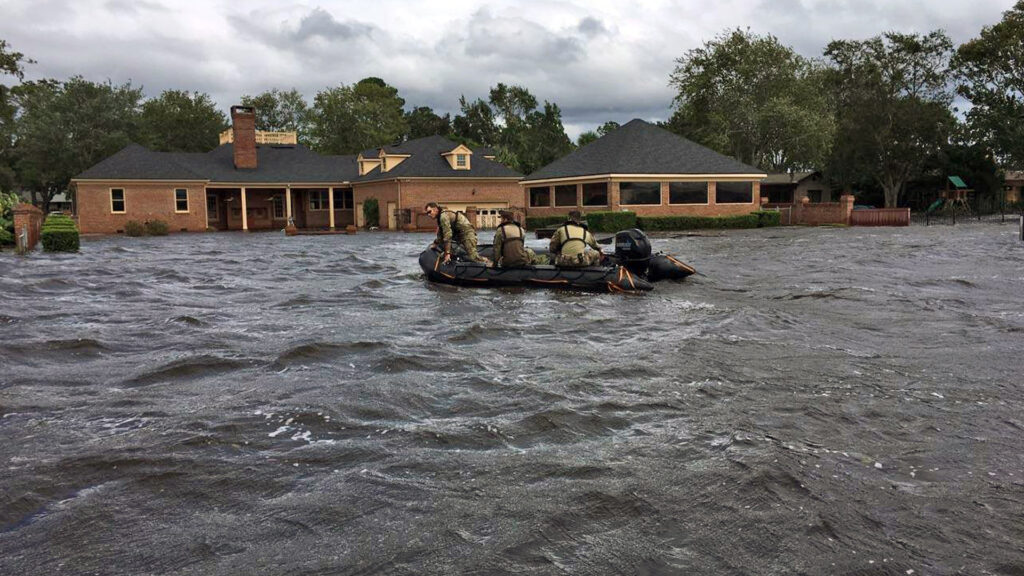By the Tampa Bay Times Editorial Board
In Jacksonville, street flooding could soon make major roads inaccessible to emergency vehicles. In Pensacola, officials are offering some coastal residents a choice: Elevate your home or take a buyout. The situation isn’t much better in parts of Pinellas County, where high tide alone is enough to inundate some streets and yards.
Anyone who thought the very real impacts of sea level rise are decades in the future needs to recalibrate their thinking, and quickly. Sea level rise is already happening, affecting almost all of Florida’s 1,350 miles of coastline. And experts say it’s going to get worse at an increasing pace.
That gloomy forecast is one of the major findings in a startling Washington Post analysis of sea level rise across the American South, which is experiencing one of the most rapid surges on the planet. Scientists aren’t sure why it’s happening, but sea levels from Texas to Florida are at least 6 inches higher than they were 15 years ago. That matches the sea level rise that occurred over the last 50 years.

“We are preparing for the wrong disaster almost everywhere,” Rob Young, director of the Program for the Study of Developed Shorelines at Western Carolina University, told the Post. “These smaller changes will be a greater threat over time than the next hurricane, no question about it.”
Scientists say sea levels are rising particularly fast along the Gulf of Mexico, which has major implications for anyone living on Florida’s west coast. Flood insurance rates, already painful for many, could rise even more in coastal areas. And mitigating the effects of rising seas will cost local governments more and more.
Consider what’s happening in Shore Acres, a low-lying neighborhood in St. Petersburg where sunny-day flooding has become so routine that some residents consult tidal charts to figure out the best times to commute.
When Tampa Bay swells with high tides, salt water pushes up into outdated drainage pipes and floods Shore Acres streets. City workers already have installed a number of “backflow preventers” there, part of a larger $3.7 million effort to protect the area against rising waters.
“The community here is very anxious for us to get this work done,” Claude Tankersley, St. Petersburg’s public works administrator, told the Tampa Bay Times recently.
The worsening situation in other Southern states shows residents have reason to be anxious. In Louisiana, choked septic systems are already failing, according to the Post analysis, threatening to contaminate waterways. In Charleston, South Carolina, elevated ocean water fueled by a winter storm last December left dozens of streets closed, one person drowned and hundreds of vehicles damaged or destroyed.
This is just more evidence of why we need to ramp up efforts now to combat sea level rise. That means stronger and better construction and enhanced protections for natural barriers such as mangroves, dunes and sea grass. Cutting carbon emissions is critical. We will also have to stop building in some particularly vulnerable areas.
“I see my neighbors hurting and struggling. It’s time for action,” said Kevin Batdorf, president of the Shore Acres Civic Association, who hopes the upgrades to his community will eventually help property values. “Who wants to live in a neighborhood where you have to drive through salt water every day?”
Editorials are the institutional voice of the Tampa Bay Times. The members of the Editorial Board are Editor of Editorials Graham Brink, Sherri Day, Sebastian Dortch, John Hill, Jim Verhulst and Chairman and CEO Conan Gallaty.
This opinion piece was originally published by the Tampa Bay Times, which is a media partner of The Invading Sea. If you are interested in submitting an opinion piece to The Invading Sea, email Editor Nathan Crabbe at ncrabbe@fau.edu. Sign up for The Invading Sea newsletter by visiting here.



